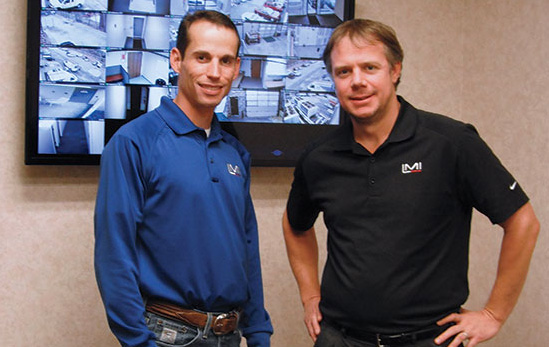March 1, 2015 – securitymagazine.com
by Bill Zalud

Audio integrated with video provides retail businesses with the ability to monitor, measure and react to service interactions, says Scott Goodwin and Nick Grace of LMI Systems.
Organized retail crime. Crowd management. Emergency preparedness. Disaster recovery. Active shooter.
Welcome to retail shopping these days. But, on the other hand, the emerging use of video and audio technologies can also now emphasize such elements as training of sales associates and after-sale needs to provide a better experience. No surprise. Many security incidents are rare compared to serving customers and bottom line sales.
No doubt, security video and patrolling officers play an important role in loss prevention. Still, a growing number of retail establishments are using video and audio surveillance in order to train staff, to set quality assurance levels as well as better settle disputes. Retail is the nation’s largest private sector employer, supporting one in four U.S. jobs – 42 million working Americans. And it contributes $2.6 trillion to annual gross domestic product in the U.S.
Of course, there are losses due to theft. But a larger potential loss area covers service, safety and quality challenges.
“We have 150 to 200 deployments of cameras and microphones in retail and fast food in facilities and drive-throughs for quality of service and food,” says Nick Grace of LMI Systems, which has been serving contractors and building owners in metro Atlanta and national-wide since 1962. Adds Scott Goodwin of LMI, “Live video and accompanying audio can best show how people respond to service requests as well as provide interactive response” at the point of maximum effectiveness during a transaction, for example.
Typically the company provides ceiling mounted microphones and the backroom gear, often from Louroe Electronics, which can integrate with security video. And, just like security video, the shift is to IP-based gear when it comes to audio surveillance. But, unlike cameras, audio can have unique sensitivity when it comes to such elements as wiretapping and eavesdropping concerns. While federal, state and local laws can vary, when audio is implemented, in some situations, clear and posted signage can accommodate any concerns. In other placements, such as employee-only areas, concerns are minimized through employment disclosure.
“Analytics is another retail trend,” says Goodwin. Security video and audio can provide data regarding traffic flow, time of day information, goods purchased, service provided and other details.
Interactive audio and video has been in place for a number of year, with Westec Interactive (now Digital Wireless by Interface of Dallas, Texas) with its application in the convenience store arena.
Today, Louroe Electronics is a major player in audio monitoring technology within the security industry. Its Verifact line of microphones, complementing base stations and communication accessories, provide line level output to interface with numerous security technologies. Speakers and microphones can connect directly to IP cameras, turning them into an IP-based intercom with hands-free capability. Such products are compatible with a wide range of DVRs, both analog and IP Network video systems, VMS software and computer-based recorders.
One audio/video example is the UPS Store in Northridge, California. Because UPS stores are individually owned, each manager must identify the best security solution for his store. Moe Kishawi, store manager at this UPS location, realized he needed to install a new system after a security breach occurred and property was damaged.
Kishawi contacted Northridge-based integrator Wilson Security Systems for help in selecting a security system. Cameras were placed throughout the store while the Verifact A was mounted on the ceiling above the main cash register. The omnidirectional microphone is encased in an ABS dome designed for ceiling mounting and can pick up sound from 15 feet away. The store manager usually uses the audio recordings when there is a conflict. If there is a dispute between an employee and customer, Kishawi will download and review the audio file from the computer and determine the appropriate action.
In one instance, a customer claimed that an employee promised them a refund. To resolve the issue, Kishawi downloaded the audio file and listened to it with the customer. The audio verified that the employee did not promise a refund. This is just one example of many where the audio verified what really happened. “Audio is a must,” says Kishawi. “I believe in audio because video by itself is not ongoing to show you what exactly happened and the interaction that took place. I would not install another security system without integrating audio.”
